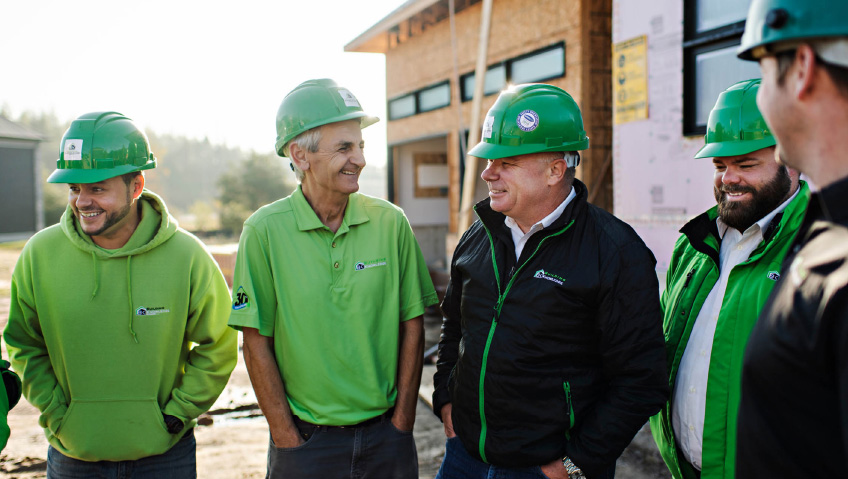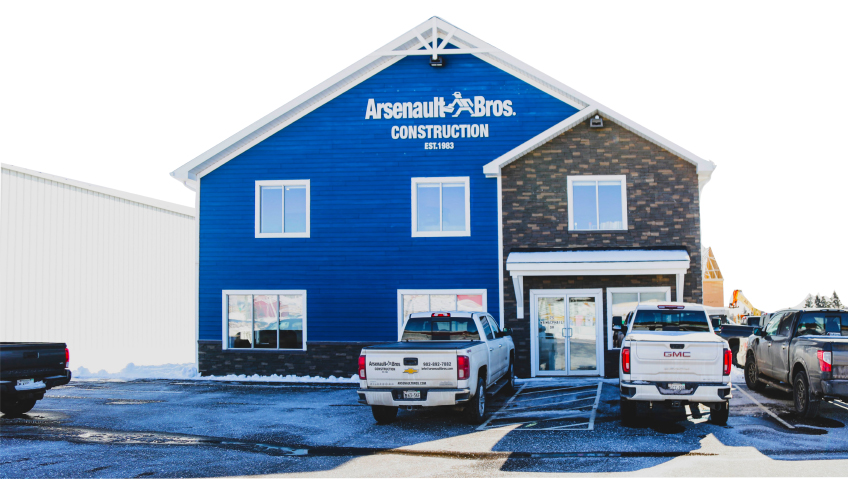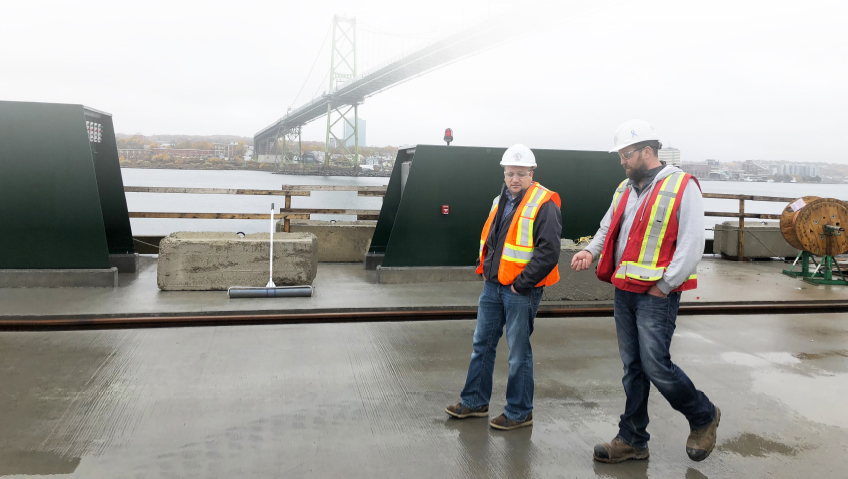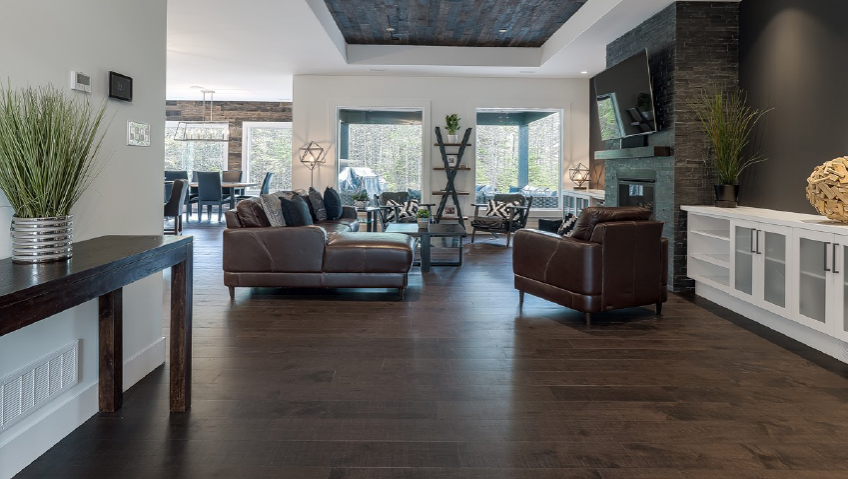There is a well-worn cliché that we have all heard a thousand times: “They sure don’t build them like they used to.” It is usually a complaint about how, in the modern world, we have chosen to trade quality for convenience or to save a little money. In the homebuilding field, one company is forever changing the way homes are built, with a focus on energy efficiency, carbon reduction, and climate resiliency—and without sacrificing affordability.
Building Knowledge Canada supports homebuilders with a trained team of expert advisors who have over thirty years of consulting experience. With their help, home builders certainly will not build them like they used to, and that is a good thing.
The company collaborates with home builders, renovators, and developers as a registered advisor for energy efficiency, net-zero qualifications, and the overall scope of building science. It focuses on Part 9 of the National Building Code of Canada and the Canadian Code for Residential Construction, which includes buildings with three storeys or less.
Building Knowledge Canada is also involved in industry-wide education efforts. The company often participates in public presentations about building science and developing high-performance homes. It aims to encourage discussion about the challenges of balancing new building regulations with the need to keep housing affordable. It works closely with several industry committees to offer training and educational resources that will help improve the industry’s knowledge of building science. By focusing these efforts on efficient and sustainable building patterns, the company hopes to raise the bar for home builders across Canada and beyond.
Its centre of operations is in Ontario with its headquarters in Cambridge. It provides consultation services to builders across all Canadian provinces, as well as to a few large home builder clients in the United States.
As it stands, the homebuilding industry is in a bit of a perfect storm. As material costs and labour shortages have continued to rise, so have the costs to build a home. “We recognize, along with our clients, that housing affordability is not only under threat, it’s almost become untenable,” explains Vice President and Director of Building Science Andrew Oding. “The world of building, developing, and renovating is becoming more and more complex due to all of the societal concerns and burdens.” Building Knowledge Canada is determined to apply its building science expertise to solve the problem of affordability in the housing market.
Over the last two decades, the world has awoken to the impending threat of climate change, and the home building industry has been transforming. Homes have become significantly more efficient in using energy to keep them operating. Designs have been adapted to manage and make use of solar heat; insulation materials have been substantially improved; windows and doors are installed with better seals, and much more. The enhancements are many and varied, and the resulting structures represent a drastic improvement in sustainable housing.
Home builders are continually adapting their practices as we refine our understanding of climate change, but requirements and recommendations change so quickly it can be a challenge to align regulatory compliance with customer needs. Building Knowledge Canada’s team of expert advisors specializes in applying building science to navigate these challenges.
Often, when building a modern home, the instinct is to focus on the most obvious environmental concerns, and there is a rush to implement those. Building Knowledge Canada consultants bring a deep understanding of building science to help home builders consider the less obvious concerns as well. With their expertise, builders can design a strategy that is sustainable and follows regulations, all while maintaining affordability in the final product.
For example, one way to reduce carbon emissions in a home is to focus on installing high-performance insulation, robust assemblies, more panes of glass, and specialized roofing material. A properly sealed home will reduce its carbon footprint throughout its lifecycle. This approach is necessary for building sustainable housing, but Building Knowledge Canada understands that there is more to this story.
“These things are good, and we will need to do them,” says Oding. “However, if we use certain materials in a house to reduce the carbon emissions while it operates, we could end up using materials that have high embodied carbon already in them, and the problem with that is we actually may make the problem worse. We may actually emit more carbon if we’re not careful about the materials that we’re using.” Embodied carbon is the total greenhouse gas emissions released during the complete lifecycle of material from manufacturing and delivery to installation and disposal. It is a balancing act, but one that Building Knowledge Canada understands well.
The complications go even further. Many of the low embodied carbon building materials best suited for these projects have drawbacks. These products are often naturally grown and harvested wood fibre products that can be prone to water damage. This makes it even more important to focus on rainwater management in the design of the home, to ensure that low materials can be used without adding the burden of water damage risk to the homeowner.
Building Knowledge Canada is committed to helping home builders balance all these concerns and design reasonable solutions that address them together. The company has identified three key focus areas that are helping to drive the industry in the most sustainable direction. These are energy efficiency, carbon reduction, and climate resiliency.
Energy efficiency has been heavily codified in the tiered energy code, reaching net-zero requirements for the highest tier. Canadian provinces have already adopted the requirements for some of the mid-tier levels, and these regulations will continue to move toward more efficiency going forward.
“What we have to remember though, is that energy was really just a surrogate for the real conversation, which is about carbon reduction,” says Oding. “Over the next five to ten years, we’re going to see more of an emphasis on not just reducing energy, but also reducing carbon.”
Beyond energy efficiency and carbon, resiliency is beginning to take on a bigger role in the design of modern homes. As the world continues to see more unprecedented climate events, homes will have to be built to accommodate extreme weather and other environmental threats.
The industry is evolving and so too must the tools and technologies used by home builders and advisors like Building Knowledge Canada. Recently, Chris Magwood and his team at the Endeavour Centre in Peterborough, Ontario released an innovative new tool called BEAM Estimator. BEAM is an acronym that stands for Building Emissions Accounting for Materials. An advisor can submit the main dimensions of a building and get back a list of raw materials with details about their carbon cost.
Tools, like Natural Resources Canada’s ‘HOT2000,’ have existed for calculating the energy cost of a building, but now with BEAM, the complete carbon footprint can be calculated as well. This includes not only operational carbon—the carbon released in heating, cooling, and providing electricity to a building—but also embodied carbon. These two metrics are being combined into a measurement that industry leaders have begun calling ‘carbon intensity.’
Carbon intensity is a relatively new concept, but some research is already being done. Chris Magwood, one of the members of the group behind BEAM, headed up the world’s first greenhouse gas benchmarking study, called Emissions from Materials Benchmark Assessment of Residential Construction (EMBARC). This research studied greenhouse gas emissions from building materials used to construct homes in Toronto and Hamilton. The results of this study revealed more than 840,000 tonnes of carbon and demonstrated the value of a more comprehensive metric for carbon measurements.
Building Knowledge Canada has long brought an understanding of both operational and embodied carbon to its consultations but the addition of these new tools and techniques will greatly improve carbon measurements not only for itself but for the industry at large.
As the director of building science, Oding keeps a very close eye on industry advancements. He is a past chair of the technical research committee for the Canadian Home Building Association and the Net-Zero Council. He is also a member of the Net-Zero Council Management Committee and has been since it was originally founded in 2014.
“To me, it’s been an absolute privilege to get to know the industry experts and stakeholders that participate in these committees. There’s really no other forum like it in Canada,” says Oding.
This year, Building Knowledge Canada President Gord Cooke was recognized with the ‘Clean 50 Lifetime Achievement Award’ for his ongoing contributions to sustainability in the Canadian housing market. Last year, Huso Ashimi, a Building Knowledge Canada energy advisor with nearly two decades of experience, won the energy evaluator of the year award from EnerQuality. But beyond these recognitions, Building Knowledge Canada feels that the real reward is watching its customers achieve new levels of sustainable home building.
Recently, one of its clients, Mattamy Homes has begun closing on properties in a new development called Springwater, one of the first net-zero-ready communities in Canada. Another of its clients, Activa Homes announced this last spring that every single-detached home it builds going forward will achieve net-zero-ready performance.
“This is really exciting to us because these are builders talking about building the best homes that Canadians could possibly live in. They’re efficient; they’re lower-carbon; they’re healthy; the air is fresh and clean. You’re giving the homeowner a place where their family can thrive, and you’re building them an asset that is not going to depreciate in the face of climate change,” says Oding.






